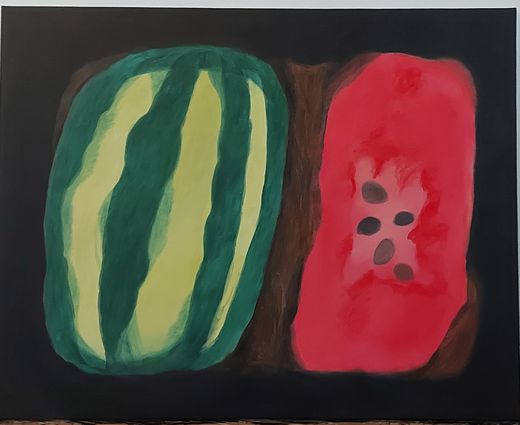

Biography
Emna Daoud was born in Tunis. She began to practice painting from 2002 in Strasbourg. Between 2008 and 2016, she returned to Tunisia where she painted in two renowned studios, those of Mustapha Raïth in Sidi Bou Saïd and Mhamed Ressaissi in Carthage. In August 2013, Emna was selected to co-exhibit with the painter Mhamed Ressaissi at the Hédi Turki gallery, Sidi Bou Saïd, Tunisia. Then she returned to France and settled in Paris where she now lives and works. Emna Daoud joined the Ecole Nationale Supérieure d'Arts de Paris-Cergy in 2017, from which she graduated in 2022. Emna is interested in the illusion of reality that painting can give. The velvety texture of a fruit or the opalescence of a ceramic present both in his daily environment in Tunisia and in the works of Louyse Moillon, painter of the seventeenth century, constitute the driving force of his work. This visual poetry inspires him to reinterpret the still life of this period, this expression not doing justice to the presence and liveliness of the objects represented.
Nationality
Themes




